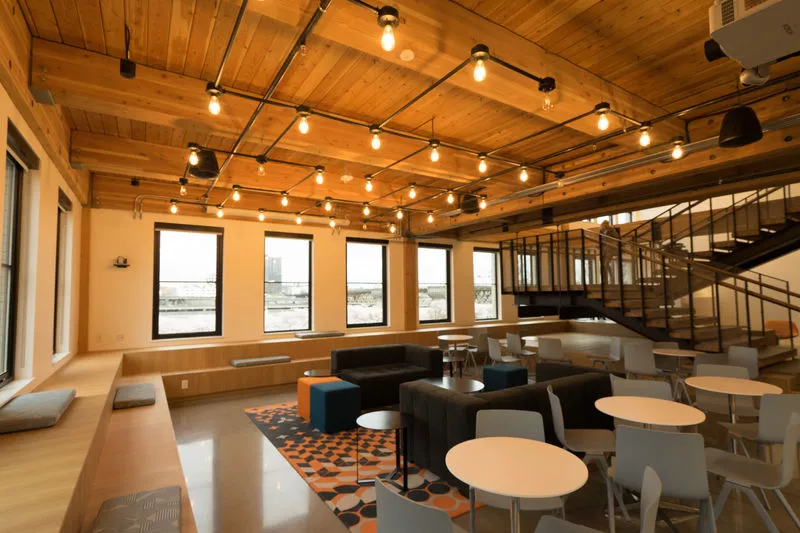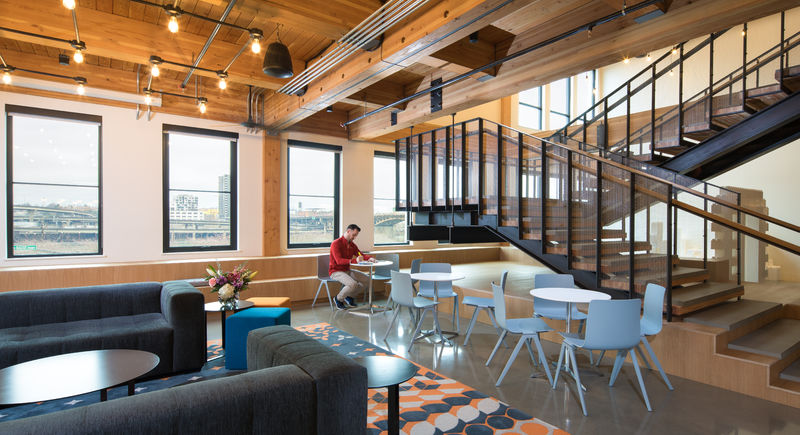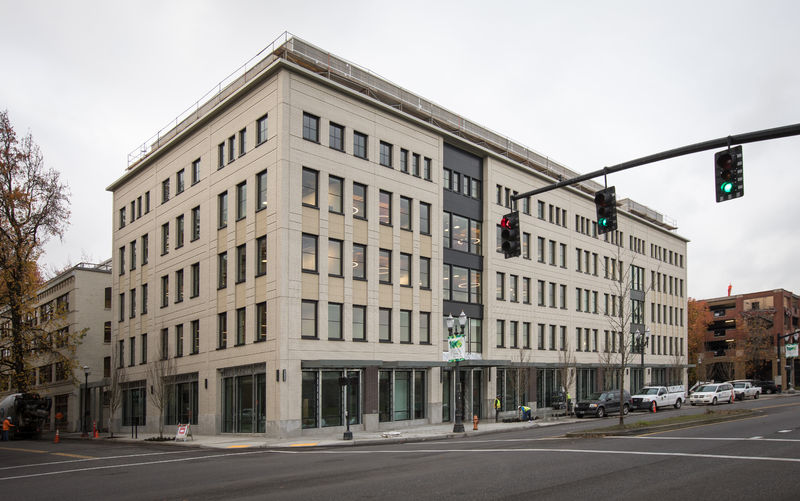
38 Davis | Ankrom Moisan Architects
Portland, Oregon-based Ankrom Moisan Architects is one of several innovative architecture firms that has designed its own office using wood. 38 Davis features a timber-frame structure with exposed glulam beams over a concrete podium, and other exposed wood, brick and concrete elements throughout that reflect the firm’s sustainable values, creative culture and urban identity.
“We wanted our founding office to inspire, support and nurture the creativity of occupants working and living in the new building,” said Murray Jenkins, executive vice president at Ankrom Moisan Architects. “The natural wood elements in the exposed structure and interior design not only provide warmth, texture and visual appeal, but the space fosters collaboration and enables us to thrive as a firm and as a community.”

38 Davis | Ankrom Moisan Architects
Clients in the commercial marketplace are increasingly looking for work environments that offer a flexible mix of work and meeting spaces for enhanced collaboration, provide acoustic and thermal comfort, and strike a balance between new and old design concepts. In addition to biophilic health benefits and lower environmental impact, wood construction and finishings create a warm, clean and inspiring atmosphere, and also incorporate state-of-the-art building performance like reduced noise, high air quality and compact, highly efficient HVAC technology.

38 Davis | Ankrom Moisan Architects
There are many advantages to incorporating wood into office buildings today and into the future:
- Project Efficiency: Next-generation wood products are created off site, shipped to the job in prefabricated sections and assembled safely and rapidly, facilitating accelerated construction schedules and reduced labor costs.
- Environmental: Wood structures require less embodied energy, are responsible for lower air and water pollution, and have a lighter carbon footprint than other commonly used building materials such as steel and concrete.
- Safety: Regardless of material used, less than one percent of fires occur during construction. Fires that do happen during construction often take place when fire-limiting features, such as automatic sprinkler systems, are not yet in place. To date, nearly 97 percent of fires in sprinklered buildings have been contained to the room of origin. Mass timber offers excellent fire resistance as thick panels char at a slow, predictable rate. Both light-frame and mass timber structures benefit from added fire protection, such as firewalls and use of gypsum board products. In addition, wood’s inherent flexibility and light weight provides benefits in a seismic or high-wind event.
- Occupant Well-Being: Wood structures are ultimately healthier and more comfortable for occupants, both decreasing stress and improving air quality and acoustics.
- Indoor Air Quality: Wood naturally improves indoor air quality due to its hypoallergenic characteristics, from easy-to-clean surfaces to humidity moderation.
- Acoustics: Wood is the material of choice for architects and designers seeking to deliver the highest-quality acoustic performance, as it is naturally sound-dampening and offers excellent noise control.
- Stress Reduction: Human exposure to nature indoors, including wood, is directly linked to positive psychophysiological responses.
Learn more about how to implement wood into your next commercial office building by visiting the Think Wood Research Library.







